What affects the mining profitability for Ethereum?
Today we will go over what are the main factors that determine how much Ethereum we get at the end of the month. Some of these factors can be controlled by us and some are just automatic and part of the network.
Over the past weeks we have been asked a lot why is the profitability getting higher on some day and a few days later the profitability is lower although the hashrate is the same. It’s important to note that this article will cover Ethereum mining only however it can apply to other coins such as Ravencoin, Beam or Grin and many others that have the same principals as ETH.
We should only consider the amount of Ethereum we get and not it’s value in USD or Euro because this value changes too often because of price fluctuation.
Now that we got everything cleared let’s see what exactly determines how much Ethereum we get at the end of the day or month however you are making calculations it doesn’t really matter.
Difficulty
The main influencer of how much Ethereum we mine is the difficulty, the higher it is, the lower our returns are going to be. The difficulty is nothing more than the total hashrate of the network divided by the number of miners that are mining on that same network. The more miners there are with more GPUs and ASICs the more the hashrate of the network will go up, and our gains will slowly go down. In the past 12 months the Ethereum network went from 173TH to a new all-time high of 515TH, 3 times more hashrate is present on the network compared to April 2020, and it’s not showing signs of stopping even with the lack of GPUs and mining hardware on the new and used market.
Reward per block
In my opinion the reward per block is even more important than difficulty especially on Ethereum. At this moment for each block that is mined, miners get 2 ETH + transactions fees and when there is a lot of movement on the network the transaction fees can be very high which leaves the miners with a much bigger reward than those 2 ETH that we should get. Looking at the current reward per block using Etherscan we found that at this very moment the reward per block is just over 4 Eths, that is double of what in theory we should get and thus this is why I consider to be an important factor in how many coins we get daily or monthly however you prefer to calculate it.
Reward per block and difficulty play an important role in mining Ethereum however other factors should be considered that can be influenced by us as a miner, and we will go over them down below.
Uptime
Uptime is very important to keep getting rewards in a stable fashion without having days with zero or almost nothing mined. When I mention uptime I am referring to the amount of time the mining rig is online and mining.
Using Simple Mining is not only easy to check the uptime and work of your mining rig, but it will help to have a much more stable uptime when compared to other operating systems especially when compared to Windows. No updates, no driver installation, no antivirus and stupid notifications that require you to troubleshoot and setup each time the rig reboots, with simple mining your rig will boot and start mining in seconds. If you are not already using it for your mining rig you should give it a try for free for the first 30 days.
Pools
Pool is where miners bring together their hashrate in order to more rapidly and reliably find blocks and get rewards, if we were to solo mine we would take much longer to find block and our mining profitability would vary a lot, we would get a lot of Eth when and if we find blocks, but we would also have many days without any rewards at all.
Finding a pool is easy nowadays and the most known ones are Ethermine, Nanopool, 2 miners, 2fpool but there are many others out there.
What we should consider when selecting a pool is the ping from us to the pool, the payment method and the fee.
Make sure that you mine to the pool for a few minutes and see how long it takes to submit shares or jobs if the MS is too high you should either find a location closer to you or pick another pool, for example as I am from Europe I would mine to the European servers of Ethermine and not to Asian or American servers of the same pool.
The payment method of the pool is also important as they can be PPLNS or PPS. PPLNS pays according to the number of shares you found during a certain period while PPS pays the same amount regarding of the number of blocks that were found while you were mining. I like to recommend PPLNS as it pays better when using a large pool that can have more luck however as always I recommend that you do your own research and find what works best for you and your mining rig.
These are the main factors that determine how much Ethereum we get at the end of the day.
Related articles about mining profitability:
